How can Chain Abstraction protocols enhance user experience? They allow users to interact with other blockchains without understanding their inner workings. Users only need to engage with components in their source chain.
The ultimate goal is to provide a "one wallet, one asset" experience, enabling interaction with any dApp on any blockchain. This approach eliminates the hassle of managing multiple wallets, bridging, and swapping.
There are two current approaches to achieve this:
Bottom-Up: Chain abstraction protocols like Particle Network, Socket, and One Balance are building primitives to abstract the user experience.
Top-Down: This approach focuses on creating applications that provide a chain-abstracted experience. Examples include dydx, hyperliquid, and Cube Exchange, which allow trading assets from various blockchains.
The Top-Down approach, particularly for trading tokens across multiple blockchains through a single entry point, is seeing the most active development. In this article, we'll explore some advancements in this "Omnichain Trading Experience."
In today's crypto trading world, users often work with multiple blockchain networks—sometimes more than 10—instead of sticking to just one. This multi-chain trading is now common, with traders moving between different systems. Cross-chain bridges help move assets between blockchains, letting traders buy tokens in each network. With thousands of cryptocurrencies available in 2024, trading across blockchains is essential.
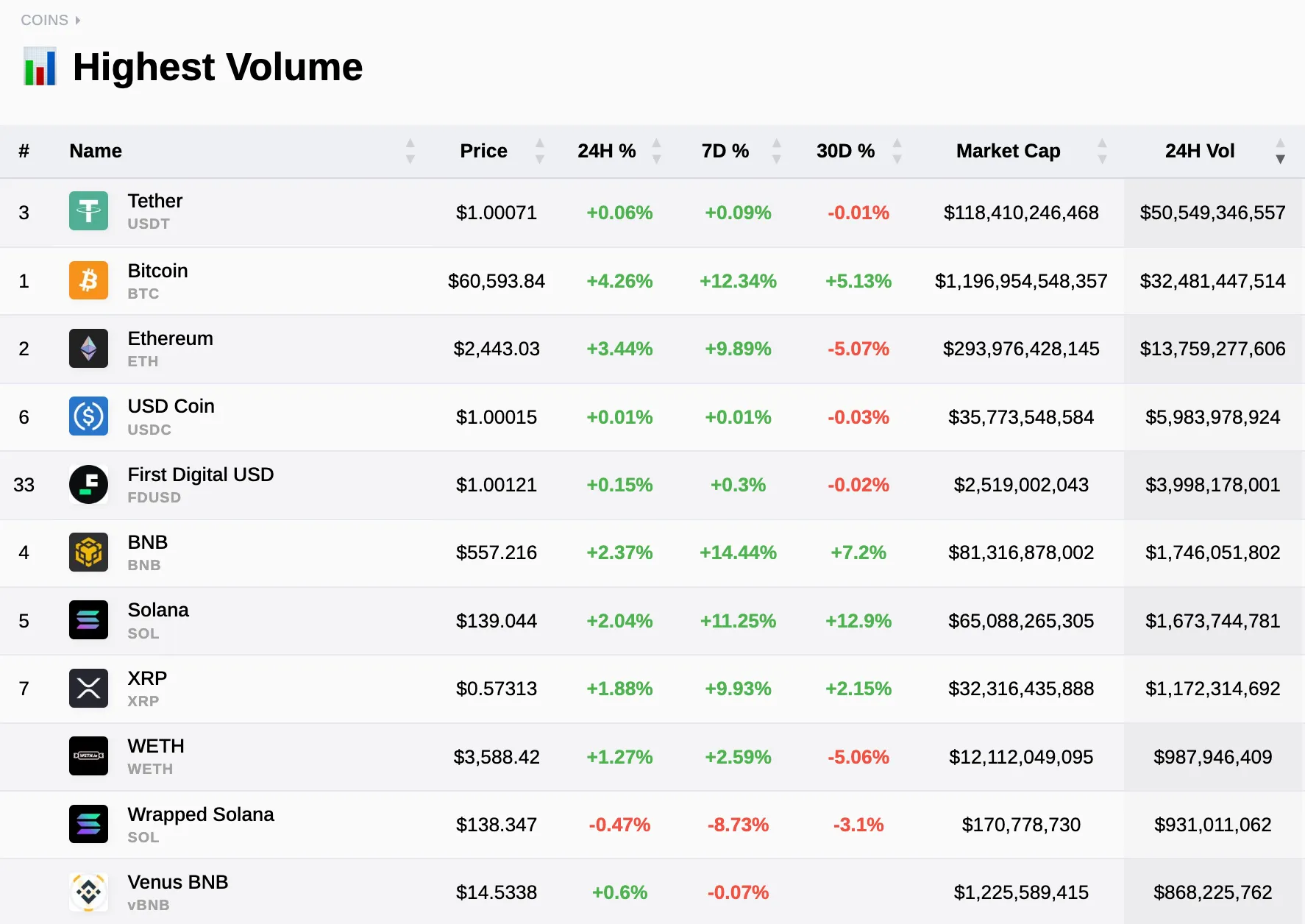
Source: Highest Volume Cryptocurrencies | CryptoSlate
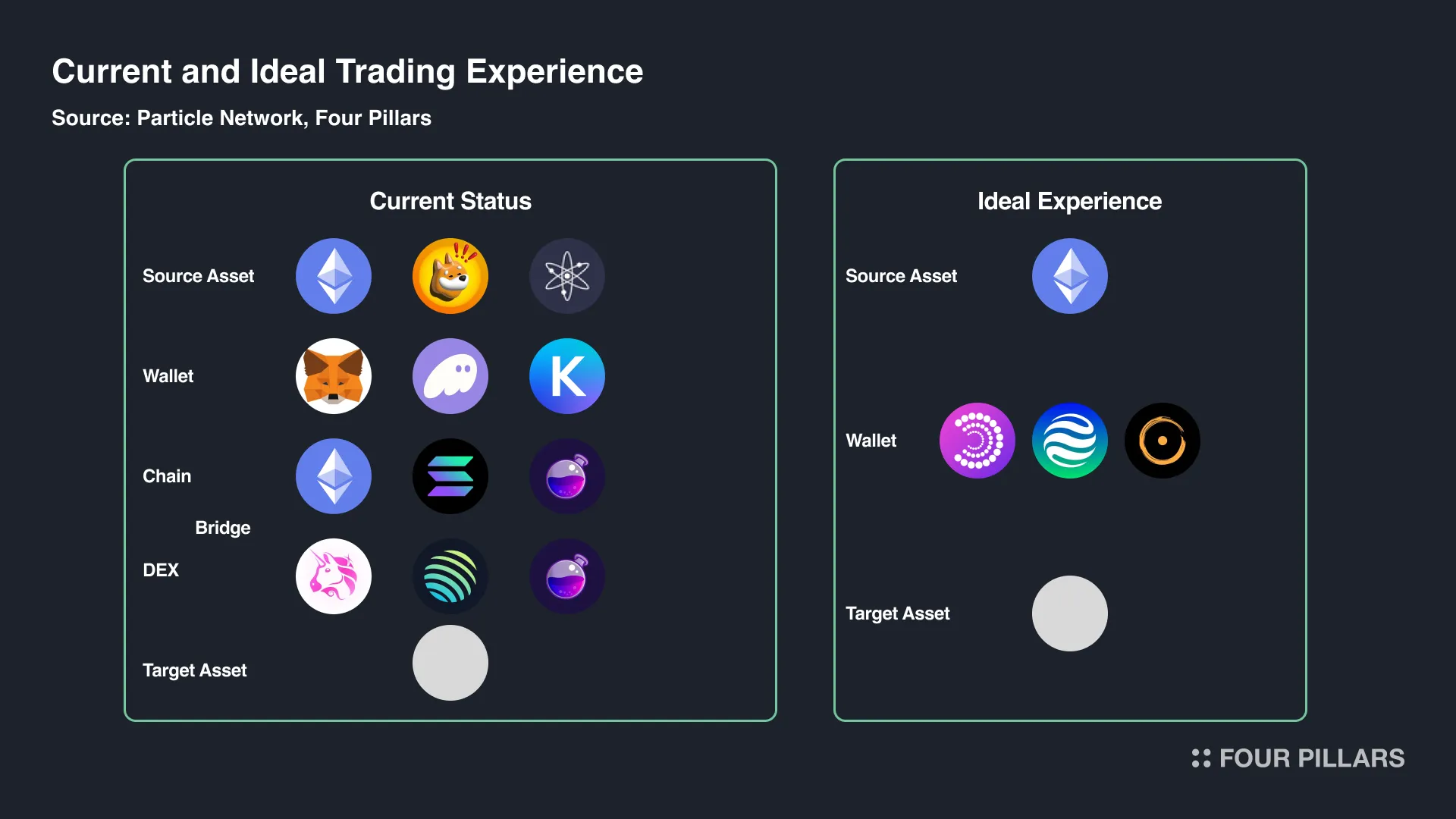
Multi-chain trading involves several key steps:
Asset and Gas Management: Tracking crypto holdings and allocating funds for transaction costs across different blockchains.
Wallet Management: Securely accessing accounts using either multiple wallets or a single multi-chain wallet supporting various assets.
Bridging: Transferring assets between blockchain networks using cross-chain bridges.
Swapping: Exchanging cryptocurrencies directly on DEX without intermediaries, often using AMMs.
To enhance the multi-chain trading experience, these steps should be streamlined into a single-click process with an improved user interface.
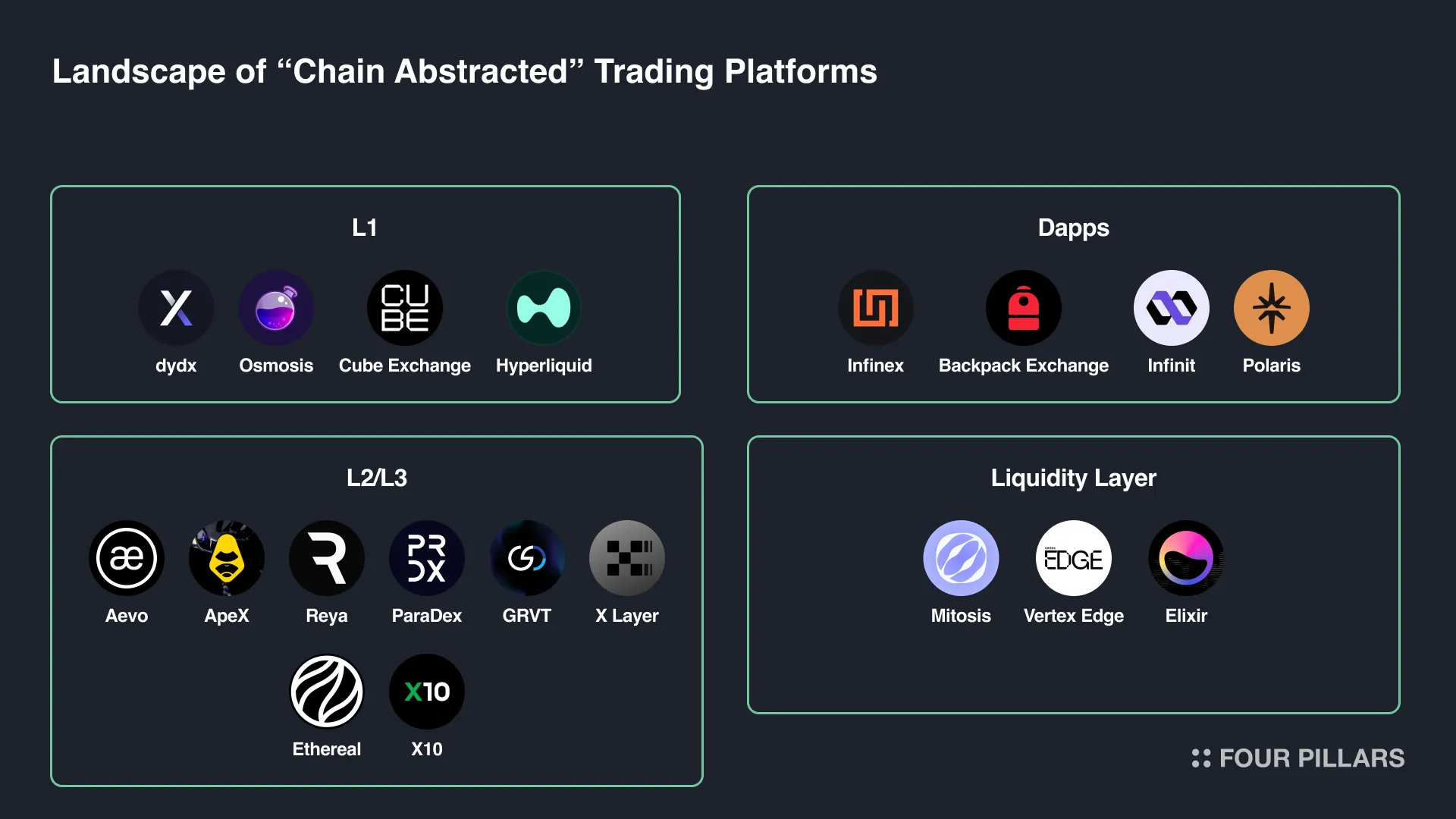
Trading platforms have adopted different approaches to provide multi-chain trading experiences. Some projects, like dYdX and Hyperliquid, have built trading-optimized infrastructure. In contrast, Backpack Exchange was developed as a dapp on Solana, offering trading pairs that include Bitcoin and Ethereum.
However, these platforms face two challenges.
Reliance on Liquidity Management by Third Parties: With over 300 blockchains, liquidity is fragmented, making it difficult to get the liquidity for each tokens. This fragmentation leads to increased slippage, higher transaction costs, and longer wait times for order fulfillment. The trading platforms need to attract professional market makers to faciliate the liquidity. However, it is difficult to find the right market maker and also make them support a certain token pair. It currently don’t fully utilize the liquidity in various DEXs.
Need to Create New Accounts: In current trading platforms, assets on other blockchains often use Multi-Party Computation (MPC) or services like Turnkey for new account creation. This setup can lead to complications in asset control, as users can’t leverage their main wallets and assets they have been using.
Chain Abstraction projects aim to improve asset and wallet management for users and protocols. Companies like Particle Network, One Balance, and Socket Magic Spend are developing a "One wallet, one balance" solution. This approach allows users to interact with any blockchains without worrying about where they hold the balance.
These projects, including Particle Network, are set to launch soon. I think their initial use cases will likely be around token trading across various blockchains, eliminating the need for users to worry about complex processes to acquire a new token in a new blockchain. However, whether they will provide the seamless experience they have promised is needed to be tested. Since there are huddles in building the secure account management infra and solver network.
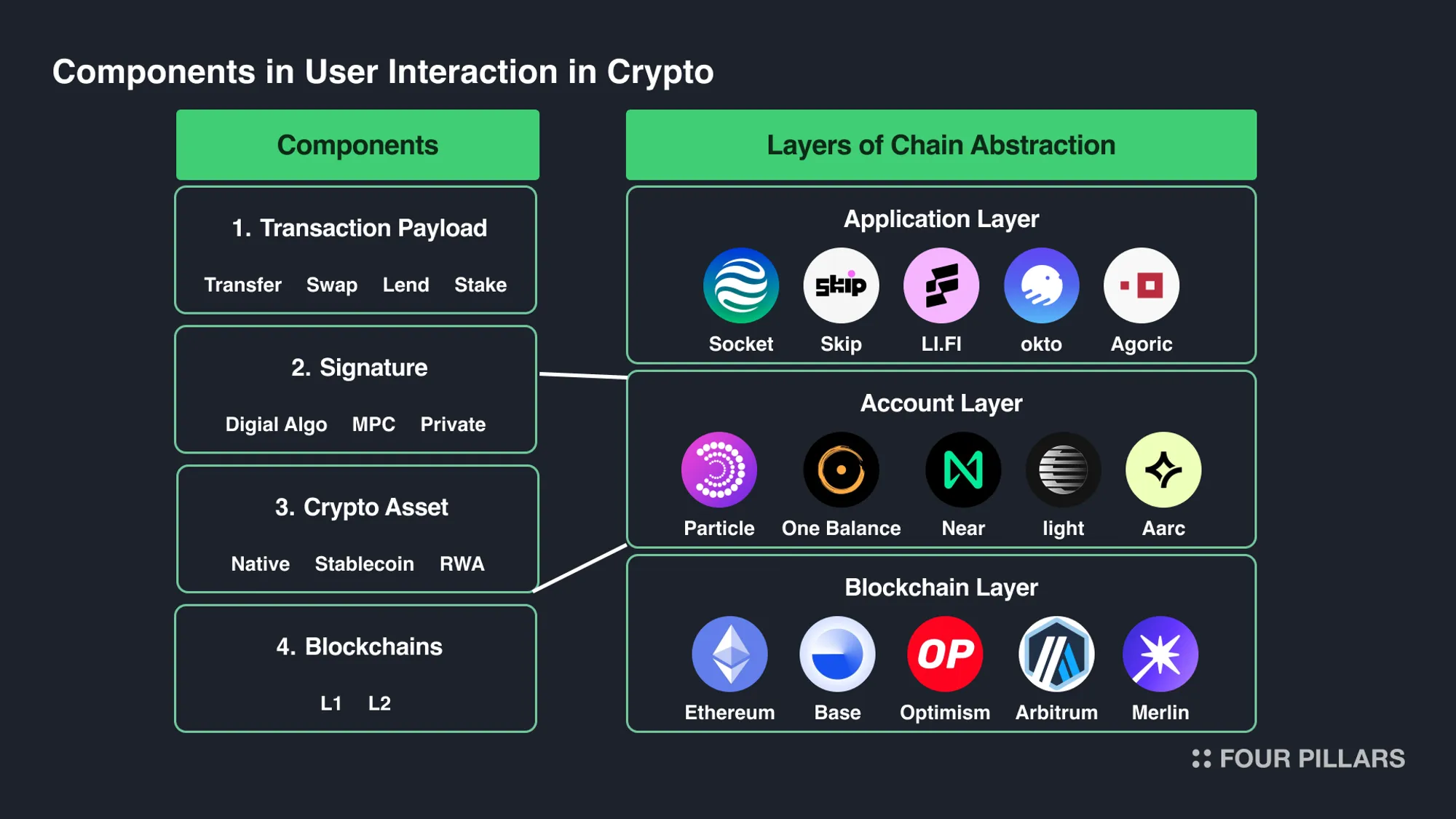
Chain abstraction-based trading experiences offer significant benefits for traders but present challenges for high-volume traders. These traders need to execute frequent, large orders, which is difficult for chain abstraction projects due to their reliance on dedicated middlemen for asset management. Despite this limitation, chain abstraction projects have opportunities to capture a share of the trading market. What strategies could these projects adopt?
Support "All Crypto Assets": Market makers for trading protocols face difficulties in supporting assets across various blockchains. While centralized exchanges (CEX) and platforms like dYdX and Hyperliquid offer a limited selection of tokens, chain abstraction projects could gain a competitive edge by supporting a broader range of crypto assets and providing an enhanced user experience.
Offer a "Mobile-First" Experience: Most people primarily interact via mobile devices, but crypto projects have been slow to optimize for mobile users. Although projects like Uniswap and Blast are developing improved mobile stacks, they still lag behind the user experience offered by CEXs. Chain abstraction projects could set themselves apart by prioritizing mobile optimization.
Chain Abstraction projects in the account layer, like Particle or Socket, offer a better experience in blockchain trading. These projects enable users to trade assets across different blockchains, using any token on any blockchain.
This approach differs from traditional experience in several ways:
Cross-chain asset utilization: Users can trade with assets from any supported blockchain.
Expanded trading options: Access to a wider range of trading opportunities across multiple chains becomes possible.
Single Account Management: Users can use a single wallet of their choice to interact with any blockchains.
The chain-agnostic nature of these platforms simplifies the trading process and potentially creates new opportunities for users to interact with various blockchain ecosystems more easily. Try out the “Universal Account” by Particle Network
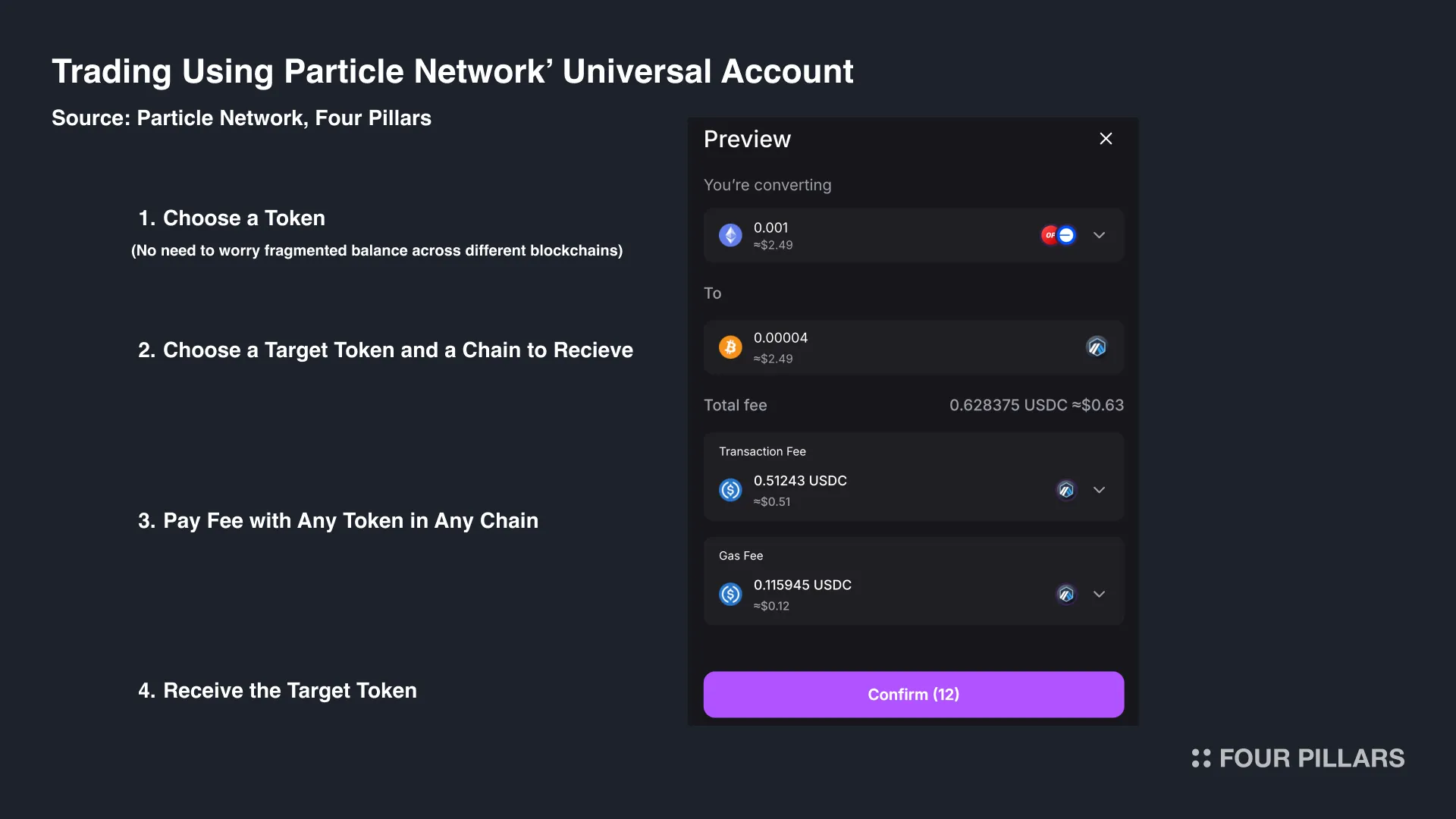
Related Articles, News, Tweets etc. :